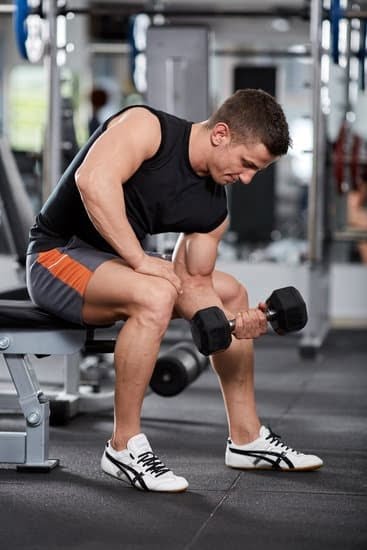Are you struggling to get fit because you hate exercise? You’re not alone. Many people find it challenging to maintain a consistent workout routine due to a dislike for traditional forms of exercise.
The good news is that there are alternative fitness options and strategies that can help you overcome this obstacle and achieve your fitness goals. In this article, we will explore how to change your mindset towards exercise, find enjoyable physical activities, set realistic goals, create a support system, make fitness fun, and understand the positive impact of exercise on overall health.
Many non-exercisers find themselves facing a mental block when it comes to getting fit. Whether it’s a lack of motivation or negative associations with exercise, changing your mindset towards fitness is crucial in achieving success. We’ll discuss strategies for overcoming these mental barriers and embracing physical activity as part of a healthy lifestyle.
In addition to addressing the mental aspect of exercise, it’s also essential to find the right physical activities that resonate with you. By exploring alternative fitness options, you can discover enjoyable ways to stay active without feeling like you’re forcing yourself to engage in traditional forms of exercise. From dancing to hiking to martial arts, there are plenty of options to choose from that can make staying fit feel like less of a chore.
Overcoming the Mental Block
Some people simply hate exercise, and the thought of working out fills them with dread. However, changing your mindset towards exercise is crucial in order to get fit, even if you loathe traditional forms of physical activity. Overcoming the mental block associated with exercise can help you make fitness a part of your lifestyle, even if you hate traditional workout routines.
Understanding Your Resistance
First, it’s important to understand why you hate exercise. Whether it’s a negative experience in the past or a general dislike for physical activity, identifying the root cause of your resistance can help you address it. By addressing these reasons head on, you can start to shift your mindset and find positive associations with fitness.
Exploring Alternative Perspectives
Instead of thinking of exercise as something unpleasant that you have to do, try reframing it as an opportunity to take care of your body and improve your overall well-being. By shifting your perspective and focusing on the benefits of exercise rather than the discomfort, you can start to change how you approach physical activity. Think about how good you will feel after a workout and use that as motivation to push through any negative feelings about exercising.
Seeking Professional Help
If changing your mindset towards exercise feels overwhelming, consider seeking professional help from a therapist or a life coach. These professionals can help you work through any mental blocks or negative beliefs that are holding you back from embracing fitness. With their support, you can develop strategies for changing your mindset and creating a more positive relationship with exercise.
Finding the Right Physical Activity
For those who hate traditional forms of exercise, finding the right physical activity is crucial in achieving a fitness routine that works for them. Fortunately, there are countless alternative fitness options that can help non-exercisers get fit without having to endure activities they dislike. Here are some ideas for alternative fitness options to consider:
- Yoga: This ancient practice combines physical postures, breathing techniques, and meditation to promote relaxation and increase strength and flexibility. With various types of yoga available, such as vinyasa, hatha, and restorative, individuals can find a style that suits their preferences and comfort levels.
- Dance: Dancing is a great way to get fit while having fun. From Zumba to hip-hop classes, there are numerous dance-based fitness programs that offer a high-energy workout in a social and enjoyable setting.
- Outdoor activities: For those who prefer to be outdoors, activities like hiking, cycling, or kayaking can provide an excellent workout while allowing individuals to connect with nature.
- Martial arts: Practicing martial arts not only improves physical fitness but also enhances mental discipline and self-defense skills. Whether it’s karate, taekwondo, or kickboxing, there is likely a martial arts style that appeals to non-exercisers who seek something more engaging than traditional workouts.
Exploring these alternative fitness options can make the journey toward getting fit much more enjoyable for those who hate exercise. By finding an activity that resonates with them, individuals can improve their overall health and well-being while bypassing the dread often associated with traditional forms of exercise.
Setting Realistic Goals
For those who hate exercise, the idea of setting fitness goals may seem overwhelming and unattainable. However, setting realistic goals is essential in making exercise manageable and sustainable for non-exercisers.
Instead of diving headfirst into intense workout routines, it’s important to start small and gradually build up. One way to do this is by incorporating simple activities into your daily routine, such as taking the stairs instead of the elevator or going for short walks during breaks at work.
Another approach to setting realistic fitness goals for non-exercisers is by focusing on consistency rather than intensity. Consistency in engaging in physical activities, even if they are low-impact or moderate in nature, can lead to significant health improvements over time.
This could mean committing to a daily 15-minute yoga session or going for a leisurely bike ride a few times a week. By setting manageable goals that prioritize consistency, non-exercisers can slowly build up their fitness levels without feeling overwhelmed.
It’s also important for non-exercisers to understand that progress takes time and that setbacks are natural. Setting realistic goals means acknowledging that there will be challenges along the way, but it’s all part of the journey towards improved physical health. By celebrating small victories and staying committed to the process, even those who hate exercise can achieve long-term fitness success.
| Realistic Goals for Non-Exercisers | Fitness Goal Setting Tips |
|---|---|
| Start with simple activities | Focus on consistency over intensity |
| Expect setbacks and celebrate small victories | Build gradual progression into your routine |
Making Fitness Fun
For those who hate traditional forms of exercise, finding ways to make fitness enjoyable is key to getting fit. Instead of dreading workouts, it’s important to find physical activities that you genuinely look forward to and enjoy. One way to do this is by exploring different options such as dancing, hiking, or playing a sport that you love. By engaging in activities that are enjoyable, you are more likely to stick with them in the long run.
Another way to make fitness fun is by incorporating variety into your routine. Doing the same workout day in and day out can get monotonous and lead to boredom. Adding variety through different classes or trying new activities can keep things interesting and exciting. Whether it’s trying out a new yoga class, going for a bike ride, or taking a dance lesson, mixing things up can make exercise feel less like a chore.
Additionally, finding a workout buddy or joining a fitness group can also add an element of fun and socialization to your fitness journey. Having someone to share the experience with not only makes it more enjoyable but also provides accountability and motivation. Additionally, joining group classes or clubs can introduce you to like-minded individuals who share similar fitness goals.
Research has shown that finding enjoyable physical activities is crucial for those who dislike traditional exercise routines. By incorporating fun into your fitness journey, it becomes easier to stay consistent and dedicated towards achieving your health goals.
| Physical Activity | Enjoyability Level (1-10) |
|---|---|
| Dancing | 8 |
| Hiking | 7 |
| Playing Tennis | 9 |
| Cycling | 6 |
Creating a Support System
Having a strong support system can make a significant difference in your fitness journey, especially if you hate exercise. Finding accountability and motivation from others can help keep you on track and encourage you to stay committed to your fitness routine.
Finding a Workout Buddy
One way to create a support system is by finding a workout buddy who shares similar fitness goals and struggles with exercise. Having someone to exercise with can make the experience more enjoyable and provide much-needed motivation. Whether it’s going for a walk, trying out a new fitness class, or hitting the gym, having someone by your side can make it easier to stick to your workout plan.
Joining Fitness Communities
Another way to find support and motivation is by joining fitness communities, both in-person and online. These communities can provide tips, encouragement, and accountability as well as allow you to connect with others who may be going through similar challenges.
Whether it’s a local running group, a virtual fitness challenge on social media, or an online forum dedicated to non-traditional exercise methods, being part of a community can help keep you motivated and engaged in your fitness journey.
Seeking Professional Help
If you struggle with hating exercise, seeking professional help from a personal trainer, fitness coach, or therapist may be beneficial. A professional can provide personalized guidance and support tailored to your specific needs and preferences. They can also help you work through any mental blocks or negative associations you have towards exercise while providing encouragement and accountability as you work towards getting fit despite hating traditional forms of exercise.
By creating a support system through workout buddies, fitness communities, and professional help, you’ll be better equipped to stay motivated and committed to your fitness journey – even if you hate exercise.
Small Changes, Big Results
Incorporating movement into your daily life is essential for those who hate exercise but still want to get fit. While traditional exercise may not be enjoyable for everyone, there are simple and practical ways to stay active throughout the day. Here are some tips on how to get fit without hitting the gym:
- Take the stairs instead of the elevator whenever possible
- Go for a brisk walk during your lunch break or after dinner
- Stand up and stretch every hour if you have a desk job
- Do household chores such as vacuuming, sweeping, or gardening
- Invest in a pedometer and aim to increase your daily steps gradually
- Join a recreational sports league or club that interests you
These small changes may seem insignificant, but they can contribute significantly to your overall health and fitness level. By incorporating movement into your daily routine, you can gradually improve your physical condition without having to participate in structured workout sessions.
Furthermore, finding opportunities for movement throughout the day can make a big difference in achieving your fitness goals. This approach also helps to combat the sedentary lifestyle that many people lead due to desk jobs or other obligations.
Remember that consistency is key when it comes to incorporating movement into daily life. Making these changes a regular part of your routine can lead to significant results over time. Even if you hate traditional exercise, finding ways to move more throughout the day can help you achieve better health and fitness.
Embracing the Benefits
Many people who hate traditional forms of exercise may not realize the numerous benefits that regular physical activity can have on their overall health. Despite the aversion to conventional workouts, it’s important to understand that getting fit doesn’t necessarily have to involve rigorous gym sessions or intense cardio workouts. By embracing the benefits of exercise and its positive impact on health, non-exercisers may find the motivation they need to incorporate movement into their daily lives.
Exercise plays a crucial role in maintaining good physical health. Engaging in regular physical activity can help individuals improve cardiovascular health, increase muscle strength, and achieve better overall fitness levels. Moreover, consistent exercise is also linked to reducing the risk of developing chronic illnesses such as heart disease, diabetes, and obesity. Understanding these long-term health benefits can serve as a powerful motivator for those who struggle with finding enjoyment in traditional forms of exercise.
In addition to its physical benefits, exercise also has a significant positive impact on mental well-being. Studies have shown that regular physical activity can help reduce feelings of anxiety and depression, improve mood, and boost self-esteem.
For individuals who hate exercise, acknowledging these mental health benefits can provide an additional incentive to find alternative ways to stay active. By recognizing the holistic impact of exercise on overall health – both physically and mentally – non-exercisers may be more inclined to explore different avenues for incorporating movement into their daily routine.
Conclusion
In conclusion, getting fit even if you hate exercise is definitely achievable. By changing your mindset towards exercise, exploring alternative fitness options, and making small changes to your daily routine, you can take the first step towards a healthier, fitter you.
It’s important to remember that physical activity doesn’t have to be traditional exercise – it can be anything that gets your body moving and your heart pumping. Finding enjoyable activities and incorporating them into your routine can make the process more manageable and even fun.
Setting realistic goals is crucial for non-exercisers. By starting small and gradually increasing the intensity and duration of your workouts, you can avoid feeling overwhelmed or discouraged. Additionally, creating a support system can provide the accountability and motivation needed to stay on track with your fitness journey. Whether it’s finding a workout buddy or joining a fitness class, having others to share the experience with can make all the difference.
Ultimately, embracing the benefits of exercise on overall health can serve as a powerful motivator. From improved mood and energy levels to reduced risk of chronic diseases, the positive impact of regular physical activity is undeniable.
By taking the first step towards a healthier lifestyle, you are not only caring for your body but also investing in your long-term well-being. So if you hate exercise, don’t let that stop you from getting fit – there are plenty of ways to make it work for you.
Frequently Asked Questions
How Do I Get in Shape but I Hate Exercise?
Getting in shape without enjoying exercise can be challenging, but there are still options available. You can focus on activities that don’t feel like traditional exercise, such as dancing, hiking, or playing sports. Finding a physical activity you actually enjoy can help make the process more bearable.
How Do You Start Working Out if You Hate Working Out?
Starting to work out when you hate it may require a mindset shift. Instead of thinking of it as “working out,” try reframing it as simply being active. Start small with activities that are less intimidating and gradually increase intensity and duration as you become more comfortable.
How Do You Get Toned When You Hate Working Out?
To get toned without enjoying traditional workouts, consider incorporating strength training into your routine with exercises like bodyweight movements, resistance band workouts, or even yoga. Additionally, prioritize small lifestyle changes like taking the stairs instead of the elevator or taking walking breaks throughout the day to keep your body moving consistently.

Passionate about providing useful information to anyone with an interest in the field of Personal Training, I strive to pass on to our readers quality information and to answer any questions about Personal Trainers, the work they do and how to become one.





